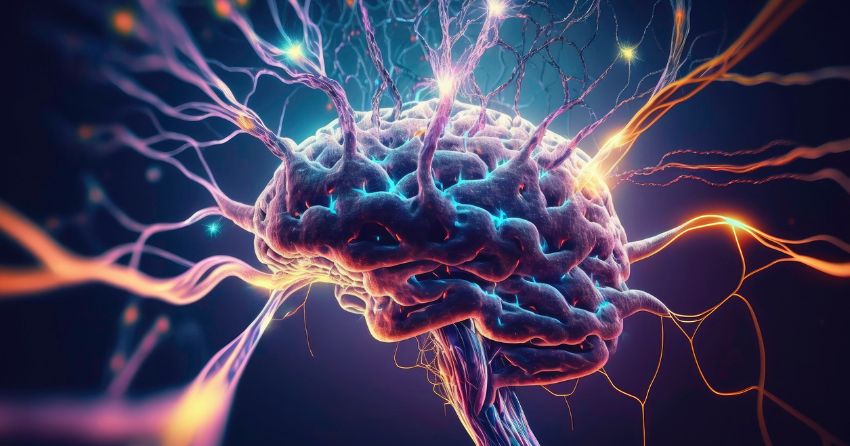The Potential of Phosphatidylserine for Nervous System Health, Cognition, And More

Phosphatidylserine (PS), a phospholipid present in every human cell, is integral to our overall health. This fat-soluble molecule is known to contribute to the structure and longevity of our tissues, organs, and most notably, brain cells. Our bodies make only a small amount of PS, so we must get enough of this nutrient from foods and supplements.
Phosphatidylserine: A Brief Overview
Phosphatidylserine (PS) is a type of fat that makes up the basic structural components of the cell membrane. PS is ubiquitous in the human body and highly concentrated in the brain, where it contributes to cell metabolism, cell communication, and specific neurotransmitter systems. PS is synthesized by the body, but can also be obtained from food sources, including soybeans, eggs and certain types of fish. However, the amounts in food are typically much lower than the amounts used in studies examining its potential health benefits, leading some people to take dietary supplements to achieve the desired intake levels.
What Makes Phosphatidylserine Essential?
Phosphatidylserine plays a vital role in supporting cellular functions across the brain and body, serving as a key component in:
· Brain tissue
· Neuronal cells
· Muscle cells
· Blood platelets
· Reproductive organs
· All internal organs
Top 5 Benefits of Phosphatidylserine
PS boasts a range of benefits, from improving cognitive function to elevating athletic performance, particularly in older adults with diminished PS levels. Here is a rundown of the top five benefits of incorporating this vital nutrient into your regimen to counteract aging and maintain youthful vitality.
1. Optimize Cognitive Function
PS makes up about 15% of the brain's phospholipids and is vital for cognitive health. It bolsters synaptic functions and neuron-to-neuron communication, playing a key role in mental performance. Moreover, PS is crucial for the activity and effectiveness of neurotransmitters like acetylcholine, dopamine, and serotonin, which are central to cognitive functions. Research indicates that supplemental PS can enhance brain functions, including memory, information processing, and daily activity performance, particularly benefitting older adults experiencing cognitive decline due to aging (1, 2).
2. Support Peripheral Nerves
PS plays a crucial role in maintaining neuronal health and counteracting the changes in the peripheral nervous system (PNS) that come with aging. As a key component of neuronal cell membranes, PS is critical for the maintenance and repair of nerve cells across the PNS. It is particularly essential for the accurate transmission of nerve signals, which are important for muscle function, sensory processing, and overall bodily coordination. Research underscores the benefits of PS in supporting nerve signal transmission and minimizing nerve fatigue, thus contributing to the overall health of the PNS (3).
3. Enhance Stress Management
PS interacts with the body’s stress management systems through the hypothalamic-pituitary-adrenal (HPA) axis, which manages cortisol production— a hormone essential for the body's response to stress. By regulating the release of cortisol, PS supports a balanced state in both physical and mental health. Supplementing with PS can improve an individual's resilience to stress and help reestablish homeostasis after periods of stress (4, 5).
4. Support Healthy Mood
PS provides mood support through its effect on stress hormones and neurotransmission. Several studies suggest PS can help modulate the hypothalamic-pituitary-adrenal (HPA) axis, leading to an improved stress response and healthy mood states. PS also affects neurotransmitters like dopamine and serotonin, which are known to directly influence mood. Research demonstrates that PS supplementation can significantly bolster mental and emotional well-being (4,6).
5. Improve Exercise Performance
PS is also recognized for its ability to boost physical performance. Empirical evidence has linked PS to improved exercise capacity, helping cyclists and other endurance athletes to surpass their physical performance boundaries. Moreover, PS has a beneficial impact on exercise-induced stress. Elevated cortisol, a byproduct of intense physical exertion, leads to increased muscle breakdown, amplified fatigue, and prolonged recovery phases. By reducing cortisol levels, PS has the potential to accelerate exercise recovery, reduce muscle soreness, and foster an improved state of physical and mental well-being after strenuous activity (7,8,9).
Phosphatidylserine Dosage
When choosing a PS supplement, read the ingredient label carefully. Many brands will source their PS from soy, a common allergen and frequent source of intolerance for many individuals. Look for PS sourced from sunflower instead.
Current research suggests that an optimal dosage of PS is between 300 and 600 mg per day, which can be taken as a single dose or spit into 2 doses for convenience.
Concluding Thoughts
Phosphatidylserine (PS) is vital to cell membranes and is therefore an integral part of many physiological processes, ranging from cognitive function to athletic performance. The research underscores its multifaceted role, particularly in neuronal health, neurotransmitter balance, and stress response. Although our bodies generate some amount of PS, the benefits of additional intake are convincing, especially for older adults and especially for brain health. The safety and efficacy of PS make it an excellent option for those interested in scientifically supported interventions for achieving better health and a higher quality of life.
References:
1. Kang, et al. Korean Journal of Food Science and Technology, 2022.
2. Yong, et al. Chongqing Medicine, 2011.
3. Kay, et al. Molecular Biology of the Cell, 2012.
4. Benton, et al. Nutritional Neuroscience, 2016.
5. Monteleone, et al. European Journal of Clinical Pharmacology, 1992.
6. Gindin, et al. Unpublished Report, 2009.
7. Kingsley, et al. Medicine & Science in Sports & Exercise, 2006.
8. Baumeister, et al. Nutritional Neuroscience, 2008.
9. Starks, et al. Journal of the International Society of Sports Nutrition, 2008.





